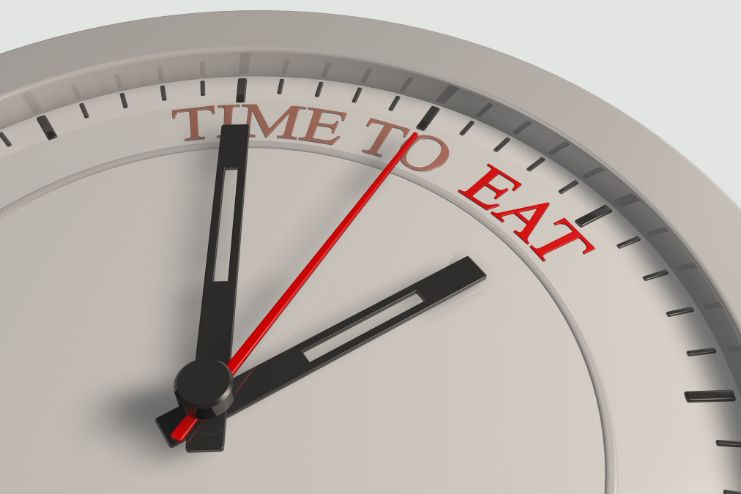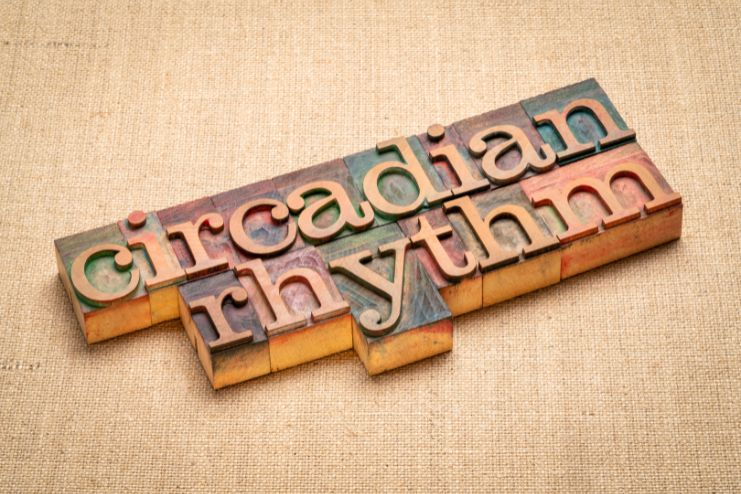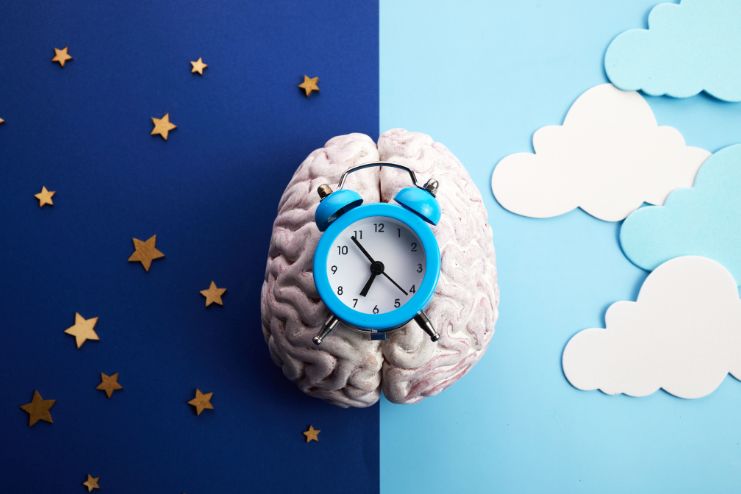Affiliate Disclaimer
Some links in this article are affiliate links. We may earn a small commission if you make a purchase through these links, at no extra cost to you. We only recommend products we find useful to our readersAre you among those energized and ready to eat a hearty breakfast? Or do you struggle even to wake up and function before noon? Do not worry even if you fall in the second category of people. This isn’t just personal preference; it’s tied to your chronotype, the natural rhythm that safeguards your sleep-wake cycle and influences your metabolism, digestion, and overall health.
According to science, eating in sync with our body’s internal clock, known as chrononutrition, can help increase energy levels, promote digestion, and manage weight issues. This can also reduce the risk of chronic diseases like obesity and diabetes. But how do you determine the best meal timing for you? That’s where your chronotype diet comes in.
In this article, we’ll explain how your unique chronotype (Bear, Lion, Wolf, or Dolphin) affects your metabolism and suggest meal timings that align with your body’s needs. Read on to know how!
What is a Chronotype?

A chronotype is your body’s natural inclination for sleep and wakefulness. The body’s internal clock, the circadian rhythm, controls it and plays a crucial role in hormone production.
Your chronotype is your body’s natural inclination for sleep and wakefulness. Your circadian rhythm regulates it, and the internal clock influences hormone production, digestion, and metabolism. Understanding your chronotype helps you decide when to eat, exercise, and sleep better.
The Four Main Chronotypes:
- Bear: Bear is the most common chronotype, and your energy is at midday.
- Lion: People with this chronotype are early risers who are productive in the morning and fade by evening.
- Wolf: The wolf chronotype is for night owls who hit their energy peak in the late afternoon or evening.
- Dolphin: Dolphins are light sleepers with irregular energy patterns throughout the day.
The Science Behind Chrononutrition

Chrononutrition focuses on eating harmoniously with your circadian rhythm to enhance digestion, nutrient absorption, and metabolism. Key hormones that influence hunger and digestion fluctuate throughout the day:
- Cortisol: Highest in the morning, stimulating alertness and metabolism. This assists in kick-starting the body’s energy production and fat metabolism in the early part of the day.
- Insulin: More effective earlier in the day, i.e., glucose is utilized better. Consuming carbohydrates earlier can avoid insulin resistance and enhance metabolic health.
- Ghrelin (Hunger Hormone): Peaks before meals, assisting in regulating appetite. Disturbances in ghrelin secretion can cause overeating and metabolic problems.
- Leptin (Satiety Hormone): Aids in signaling fullness, dependent on meal timing. Irregular time of meals may interfere with the leptin signal and lead to dysregulation of appetite and weight gain.
Eating outside our natural rhythm, like late at night, can lead to metabolic imbalances, insulin resistance, and weight gain.
The Four Chronotypes and Their Optimal Eating Patterns

If you also wish to know about your chronotype and when to eat to maximize nutrition, we will help. Let’s understand the four main chronotypes and the best times they should eat for optimal nutrition.
1. Bear Chronotype (Most Common – Midday Energy Peak):
As mentioned above, the bear chronotype peaks its energy at midday. So here’s how you can utilize this and align the meal timing accordingly:
- Best Eating Schedule: The best eating schedule must consist of regular meals and focus on early dinner for maximum nutrition.
- Foods to Focus On: Since the energy peaks around midday and slowly fades off, you must focus on balanced macronutrients and have a high-fiber breakfast.
- Foods to Avoid: Avoid heavy late-night meals, as these affect energy levels and might disturb your sleep cycle.
- Why? The reason is simple. Bears follow the sun, with energy naturally reaching higher points during the afternoon. A good, nutritious, hearty breakfast and lighter meals in the evening support stable energy levels.
2. Lion Chronotype (Early Risers – Morning Energy Peak):
Lions are early risers, and their energy peaks during the morning hours. Here’s how and when they must align their eating timings for better nutrition:
- Best Eating Schedule: People with a lion chronotype must eat breakfast like a king. Simply put, a large breakfast at the start of the day and an early dinner work best for these.
- Foods to Focus On: Focus on having a protein-rich breakfast, while lunch must contain complex carbs.
- Foods to Avoid: Avoid caffeine later in the day or heavy evening meals.
- Why? Lions burn through energy early in the day, so a heavy protein-packed breakfast and a light dinner without caffeine keep them energized and prevent energy slumps after midday.
3. Wolf Chronotype (Night Owls – Evening Energy Peak):
Night owls, as we call them, are the wolf chronotype that have maximum energy in the evenings. Here’s how you can align your meal type if you fall into this category:
- Best Eating Schedule: Opt for a light breakfast and prefer meals later during the day.
- Foods to Focus On: Include healthy fats and lean proteins that help maintain energy levels.
- Foods to Avoid: Sugary morning foods and caffeine late at night.
- Why? Wolves struggle with early mornings. Eating later in the day matches their natural energy peaks and keeps their metabolism steady.
4. Dolphin Chronotype (Light Sleepers – Irregular Energy Levels):
The energy levels of this chronotype often fluctuate. Here is the best meal plan for the dolphin chronotype:
- Best Eating Schedule: Small, frequent meals are the best options for dolphin chronotypes.
- Foods to Focus On: Include magnesium-rich foods and lean proteins for stable energy.
- Foods to Avoid: Stimulants like caffeine and processed sugar lead to sudden energy crashes, so they must be avoided.
- Why? Dolphins have unpredictable energy, and making small, frequent meals is ideal for maintaining balance.
Chronotype-Specific Nutrition Strategies
If you wish to make eating for your chronotype work in daily life, we have a few tips.
How can you make eating for your chronotype work in daily life?
- Meal Prepping: prep and plan meals that align with your schedule and changing energy levels.
- Exercise Timing: Plan your workouts as per the energy levels, as in exercise when your energy is at peak.
- Hydration: Hydration is essential. Drink water consistently throughout the day to support digestion and other bodily functions.
- Blood Sugar Balance: Focus on eating whole foods at the right time helps avoid crashes.
Benefits of Eating According to Your Chronotype

There are significant benefits of eating as per your chronotype. Aligning your meal timing with your circadian rhythm can:
- Improve metabolism by improving nutrient absorption and promote your overall well-being.
- Boosts energy levels and reduces tiredness throughout the day.
- Supports weight management by regulating hunger and satiety hormones.
- Reduce the risk of metabolic disorders like diabetes and obesity.
Common Challenges And How To Overcome Them
Changing meal times to suit your chronotype isn’t always smooth, particularly with work and social responsibilities. Here’s how to overcome the challenges:
Social Schedules vs. Natural Eating Rhythms: Sticking to your ideal meal timing can be tough when social events or work lunches interfere. A good strategy is to plan ahead of the event. For this, you can eat a small, nutrient-dense snack before events so you’re not overly hungry and can make balanced choices.
Aligning Mealtime with Work Hours: Irregular working hours interfere with eating routines. If you work late-night or overnight shifts, attempt regularity by taking meals at established times, regardless of whether these don’t happen at typical meal times. Eat nutrient-rich food to keep going and avoid a heavy meal before bedtime.
Adapting Chronotype Eating to Families: It may be difficult if members of the household eat at different times. One solution is to have a midway, such as eating dinner a little earlier for early birds or making breakfast adjustable with grab-and-go items that suit all parties.
Conclusion

Your chronotype isn’t just about sleep or eating habits alone. It affects how you eat, digest, and promote nutrition absorption. By aligning our meal timing to the circadian rhythm, we boost our digestion, feel energized, and manage weight effectively.
You can start small and experiment with the tips mentioned above. All you need to do is identify the chronotype, prep meals per the schedule, and experience noticeable changes in your energy levels and well-being.
In this Article

















